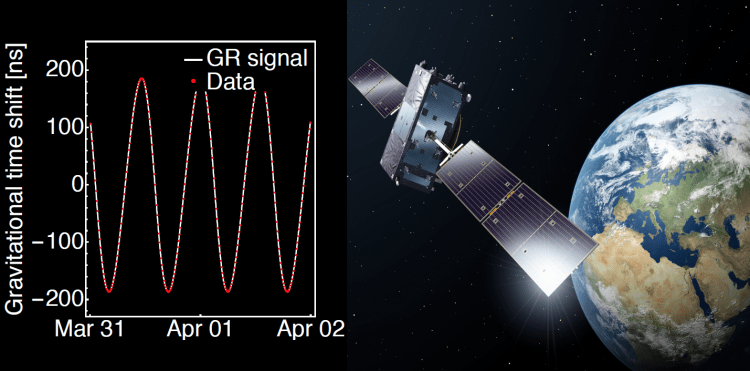
Galileo General Relativity tests published
Europe’s Galileo satellite navigation system has provided a historic service to the physics community worldwide, enabling the most accurate measurement ever made of how shifts in gravity alter the passing of time, a key element of Einstein’s Theory of General Relativity.
Two European fundamental physics teams working in parallel have independently achieved about a fivefold improvement in measuring accuracy of the gravity-driven time dilation effect known as ‘gravitational redshift’. These parallel research activities, known as GREAT (Galileo gravitational Redshift Experiment with eccentric sATellites), were led respectively by the SYRTE Observatoire de Paris in France and Germany’s ZARM Center of Applied Space Technology and Microgravity, coordinated by the ESAC based Galileo Science Office.

This represents the first reported improvement (on the gravitational redshift) of one of the longest standing results in experimental gravitation, the Gravity Probe A hydrogen maser rocket experiment back in 1976, by Harvard University- Smithsonian Center of Astrophysics.
The precious clock & orbit data of these 2 satellites, which allowed to perform these studies, will now be kept at our ESAC based GNSS Science Support Centre. Outputs for one week of GREAT data can be publicly downloaded from GSSC (FTP access, HTTP access). More GREAT data are available upon request through the GSSC Helpdesk.
The Physical Review Letters journal has published the independent results obtained from both consortiums, gathered from more than a thousand days of data obtained from the pair of Galileo satellites in elongated orbits. They can be accessed from:
- Delva P. et al, “Gravitational Redshift Test Using Eccentric Galileo Satellites”, Phys. Rev. Lett. 121, 231101 (2018)
- Hermann S., “Test of the Gravitational Redshift with Galileo Satellites in an Eccentric Orbit” Phys. Rev. Lett. 121, 231102 (2018)
See more information at ESA web portal.


